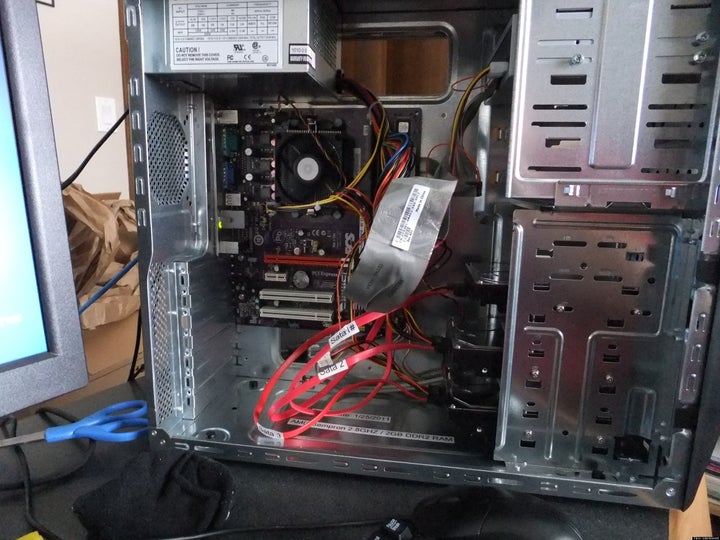
Though everyone knows that different websites have different domain names, not everyone knows exactly where these domain names come from, or who's in control. If you've ever wondered, this post is for you.
Recent worries that the Internet was running out of space have flooded in as the old IPv4 protocol hands out its last blocks of space, drawing attention to the infrastructure of the Web as we know it. IP addresses are the series of numbers that identify a computer as information is sent from server to device--on IPv4, they are literally running out of numbers.
Switching to the new IPv6 protocol will require an overhaul in technology, that at least for now, is not expected to filter to the common user. IPs correspond to domain names--the recognizable addresses that people type in to get where they're going, that represent most people's way of navigating the web.
Here is a brief walk through the wild world of domain names, with a look at how websites are born.
Let's say an enterprising young man has just started a business selling papier-mâché hippopotami. He realizes he needs a website, so he can sell his little plaster hippopotami all across the country to interested patrons. He decides he will call the website, paperhippoparty.com.
So he types in paperhippoparty.com, and is overjoyed to realize that the site hasn't been taken by some other hippo craftsman. Next step--buying a domain name. He goes to one of those sites that sell domain names, like GoDaddy, or Network Solutions, two of the many domain registrars out there today. He types in the name, and notices he can choose a few different extensions--.com, .net, .org are just a few of the options.
What he may not know is that these extensions represent domains that are held by domain name registries, organizations that will receive a small chunk of money each time a new domain using one of their extensions is registered, who are in turn administered by higher bodies.
Take .com--the largest top level domain. Top level domains (TLDs), form the highest part of the Domain Name System (DNS), the so-called phone book of the Internet that works to translate numerical IP addresses into legible site addresses (so from 982.1.124.90 to paperhippoparty.com) and vice versa. The DNS assigns a series of servers to handle the information of these maps, which can in turn assign other sub-servers.
This highest part of the DNS is known as the root zone--the top level zone in the system. Zones are merely different spaces of the DNS that have been assigned to some authority to manage the space, such as a domain registry. The DNS root zone, which has the names and IP addresses for all TLDs, is currently composed of just 13 root server clusters.
Overseeing zones in the DNS is yet another organization, called the Internet Assigned Numbers Authority (IANA), which in addition to its responsibilities with the DNS basically allocates all global IP addresses. In turn, they are run by the Internet Corporation for Assigned Names and Numbers (ICANN) under a contract with the U.S. Department of Commerce--a policy sometimes scrutinized, considering that IANA has a global functionality, not just an American one.
ICANN is the big fish in the pond. It's ICANN that has the power to approve new domains (for example, if someone wanted .hippo for hippo related sites), to manage their function, and to shut them down if they don't behave according to the rules that ICANN creates. ICANN basically ensures that the entire neuron-like branch system of domains and IP spaces that make up the Internet's infrastructure is running smoothly. More broadly, they are meant to represent the needs of the global web community, and have the power to instate policies that are meant to benefit all who seek to carve out their space on the Internet.
And who controls ICANN? Though originally developed in 1998 after the National Telecommunications and Information Administration, a part of the Department of Commerce, called for an organization to help oversee the technical infrastructure of the Internet, ICANN's reach has grown global over the past 13 years. ICANN is a privately-held, non-profit organization in Marina del Rey, California.
In 2008, ICANN announced they would be opening up room for new TLDs, after similar open rounds in 2000, and 2003-2004. Criteria for acceptance include checking against the similarity of existing domains, technical security and stability concerns, financial evaluations to ensure the registry is capable of handling their new domain, and more. $185,000 is required for an application to be considered at all.
So, if our crafty entrepreneur decided to go for that .hippo domain, he would probably contact one of the domain registries--who could then appeal to ICANN to prove that the .hippo domain is a useful domain. That registry will manage the domain names, but it might not want to register new sites in the domain itself (hungry.hippo, purple.hippo) so it could turn to a domain registrar, like the previously mentioned Go Daddy or Network Solutions, which is where common users will encounter domains for sale.
With each registration, money goes not only to the registrar, but also to the registry, and then to ICANN itself. Each level of management gets a small chunk of the change. .com, oft-regarded as a sort of universal domain, is actually owned by a company named VeriSign, though it was originally created by the government for "commercial" sites. The maximum period of registration is ten years.
But for our hippo-minded friend, things are much simpler. After going through a registrar and paying some agreed-upon yearly fee, paperhippoparty.com will be live--for whatever he wants to do to promote his handmade hippos.